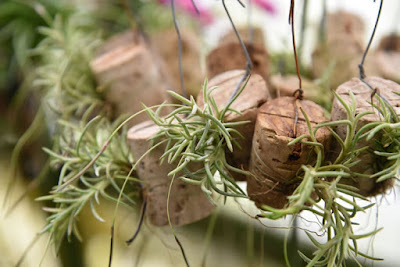Tillandsia capillaris is native to southern and western South America (Argentina, Chile, Uruguay, Paraguay, Bolivia, Peru, and Ecuador), where it grows as an epiphyte at 0-2000 meters from sea level...
Tillandsia capillaris also called as Diaphoranthema capillaris, Tillandsia capillaris f. typical, Tillandsia dependens, Tillandsia hieronymi, Tillandsia permutata, Tillandsia cordobensis, is a species of the genus Tillandsia. This species was described by Hipólito Ruiz López and José Antonio Pavon in 1802.
IDENTIFY TILLANDSIA CAPILLARIS
Tillandsia capillaris is native to southern and western South America (Argentina, Chile, Uruguay, Paraguay, Bolivia, Peru, and Ecuador), where it grows as an epiphyte at 0-2000 meters from sea level.
It is a small sized epiphyte, capable of forming considerable groupings in relatively short times, which is very variable in both size and form, to 16 cm long in flower with a rosette form from distichous, mostly 1-4 cm long, rarely shorter or up to 9 cm long, densely and finely pruinose-lepidote with cinereous to ferruginous scales leaves with usually elliptic, thin, several-nerved, densely lepidote except where covered by the next below sheaths.
This species blooms from ovate, acute or apiculate, thin with 3 or more strong nerves, densely lepidote to glabrous, usually equaling or exceeding the sepals bracts with 1-flowered, rarely 2-flowered. The flowers are subsessile, yellow, more or less orange, sometimes brown, sometimes very clear.
TILLANDSIA CAPILLARIS CARE AND CULTURE
Cultural information should only be used as a guide, and should be to be adapted to suit you. Your physical location; where you grow your plants, how much time you have to devote to their care, and many other factors, will need to be taken into account. Only then can you decide on the cultural methods that best suit you and your plants.
Light:
Tillandsia capillaris is not a full sun species: it needs a luminous position but protected from direct sun. It is recommend 17000-22000 lux as intensity.
Temperature:
The required temperature ranging from 10 to 32°C. This species enjoys significant differences in day / night temperatures, with a cooler period. In the period from April to November, when nighttime temperatures do not fall below 8-10 ° C, it can be placed outdoors in a luminous position but need protected from direct sunlight and strong rains. The plants should not face night temperatures below 3 ° C, especially if it is wet.
Mounting:
This airplant can grow as epiphyte on a piece of wood for example or grow as lithophyte on a mineral support. You can place the plant very close to a window when grow it indoors in the winter and preferably outdoors in the summer with partial shade.
Watering:
In the wild, the Tillandsia capillaris grows in places characterized by an almost desert climate and draws the humidity necessary mainly from the mists: which are very frequent and dense. Despite this, in cultivation it is recommend to water it regularly, especially during the summer.
It is sufficient to water every 2-3 days in summer (even if water it every day in the summer, like almost all the other species) and every 4-5 days in winter (if it is kept in a place with the humidity of the high air movement, otherwise the frequency of watering will remain as in summer, reducing only the amount of water).
Fertilizer:
Fertilizing is not absolutely necessary to survival, but will increase the growth and vigor of the plants and their blooms. This species need a fertilizer that can be absorbed directly in to the plant via the leaves and use Bromeliad fertilizer (17-8-22) twice a month in summer, once a month in winter is recommended.















COMMENTS